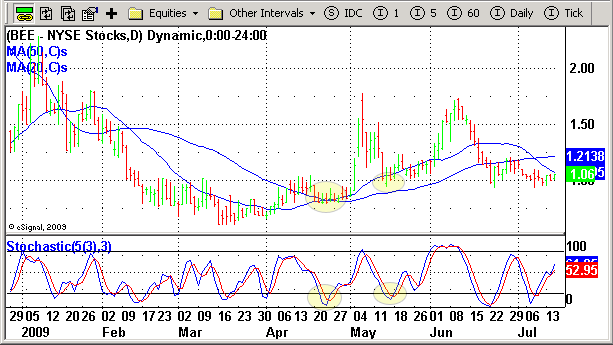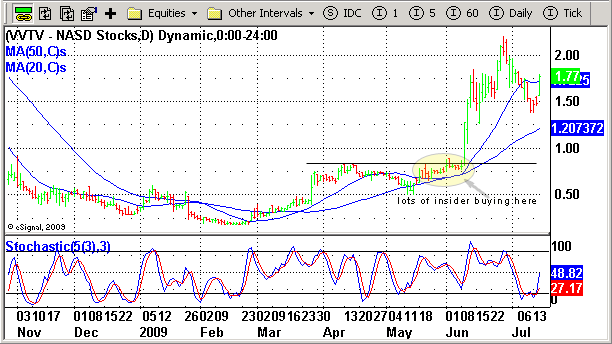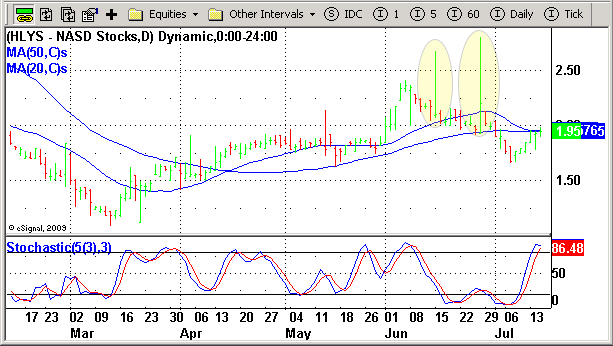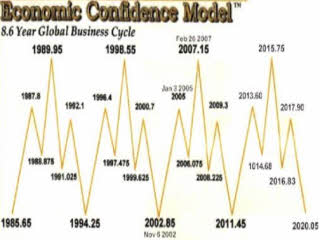
Most traders and investors at one time or another have fallen into the “confidence” trap. Sometimes it’s a result of believing in the infallibility of their research. Other times it’s due to having a presumed “hot” hand — they’ve finally got the game figured out and can do no wrong. Maybe they’ve gotten caught up with some hot new money-minting trading system with a great historical track record. Or perhaps they’ve been drawn in by someone else’s hot streak, in a chat room for instance (novice traders, trying to skip a few steps, are notorious for succumbing to this). All the calls turn out great, and even the fundamental and technical research that’s shared always seems right on the money. However, up to that point they’ve just watched –- and they’re kicking themselves for missing out on yet another huge gain. Let’s take our fictional trader and call him Bernie.
Bernie decides he’s not going to miss out on the next opportunity that comes up. When the next “hot stock” is revealed, it happens to be a stock that he himself already had on his radar. The additional research backs up his conviction. Everything seems right, and the stock appears perfectly poised for a huge move. Bernie’s confidence level for the trade is higher than ever. Forget about what he can afford to lose, this is the trade that’ll make his year!
Bernie decides to accumulate a position much larger than normal — 3 times as large in fact, equating to about a quarter of his total account size. At first, all seems to be working out great and the trade has even moved a nice 5% in his favor. Two days later however, he wakes up to find the stock down 25%, blowing right through any stop levels he may have considered. The company out of the blue announced a dilutive secondary offering to “better take advantage of opportunities that may become available” or some other similar mumbo-jumbo.
Bernie feels caught, but he figures the big picture still hasn’t really changed, and that prices should find support around the offering price. In fact, he decides to double his position around the offering price if he can. The company’s valuation seems cheaper than ever, and the company will now have even more cash to materialize its goals.
However, as the price continues to drop, Bernie starts to wonder… More investors, increasingly disgusted by the management’s apparent lack of regard for their investing well-being, decide to throw in the towel. By the end of the week, the stock is down another 38% just from the offering price! The same stock that traders and investors all loved at $9 just a few days earlier, they now hate at $5. Even those investors who bought into the secondary are feeling completely betrayed.
Ironically, if the research and valuations are accurate, the stock should be more attractive than ever at these levels. Of course, it doesn’t matter anymore, as most traders (including our newbie trader Bernie) decided to throw in the towel as the stock sells off in a panic around $4/share leaving Bernie with a whopping 44% account loss (requiring a 125% increase in account value just to reach breakeven). Several days later, the stock is trading back around its offering price. How’s that for the perfect reaming. Bernie feels crushed, blames the guy in the chat room for putting out such a horrible call, and calls him a fraud despite the fact that all his other picks turned out pretty well.
So what can we learn from this example? Even if you too could get a bailout, it may still not be enough to get you out of a bad position (as so many have learned over the past year). And if you do get away with it once or twice, the third time may hand you a reaming you won’t soon forget. When all is said and done, the only things you can really control in trading are your position size, the maximum amount of capital you stand to lose in an absolute worst-case scenario, your entry point, and how you take profits and losses. Traders must take into account a stock’s liquidity and spreads (how actively it trades and how easy it is to enter and exit), as well as a stock’s volatility. If a stock can be up or down 10% on a given day (common on many lower-priced stocks), risk must be adjusted for accordingly. On the positive side, if the stock pops sharply higher in your favor, you should always take the opportunity to take some profits. If the stock spikes on heavy volume and turns lower on the day, a top may have just set in. On the downside, you have to also keep in mind the possibility of a dreaded secondary, lost lawsuits, negative FDA announcements, surprise earnings guidance, large investors caught on margin, or even a good ‘ole bit of “cooking the books” to unravel what otherwise seemed like a terrific longer-term buying opportunity.
And that brings us to leverage. The only time traders should consider using leverage is for shorter-term intraday opportunities, as it’s much less likely they’ll be hit by a gut-wrenching gap against them. Even then it’s rarely necessary if traders pursue solid low-risk high-reward trading opportunities. This, of course, applies to more than just stocks. Just think about how confident many Madoff investors must have been to put nearly all their capital at risk (some even on margin). Like the next hot stock, investors were clamoring for the opportunity to have Mr. Madoff manage all their money. None of these investors were in the least suspicious that Madoff acted as his own clearing firm. Nor did they care to understand how he generated those returns.
And while Mr. Madoff was pretending to make his investors rich, the S.E.C. was pretending to protect them from people like Mr. Madoff. Just like they were “protecting” small traders and investors with the “pattern day trader” rules, while allowing the “too big to fail” politically connected investment banks to use 40:1+ leverage. I guess the S.E.C. forgot that one of the main reasons they were created was to “protect investors” from the 10:1 speculative leverage that helped cause the 1929 stock market crash.
Ironically, investing in Madoff wasn’t really any different than investors stampeding to jump aboard the next hot stock that turned bad. It all goes back to over-confidence, a problem that the S.E.C. could largely address simply by requiring firms to state something to the effect that “The S.E.C. in no way guarantees that this firm will not attempt to steal all your money”. That would all but force people to do much more due diligence and better risk management. It would largely reduce the disillusioned false sense of confidence burdening many investors.
So remember that risk management must be performed and considered at all levels of the game. There’s order entry and execution risk, stock selection risk, overall market risk, account risk, brokerage risk, banking risk, and even systemic risk to consider. If you’re married and possibly headed for nasty divorce, it may be your lawyers and your significant other that wreak havoc on your trading account, especially if you don’t have a pre-nup! Think you’re a great futures trader? It didn’t help you one bit if all your money was tied up at futures trading firm Refco when they declared bankruptcy due to fraud. Where was the C.F.T.C. during all this, besides working to “protect the public” from small-time newsletter publishers? At least in this case, clients of Refco were fortunate enough to eventually be bailed out by Man Financial. Regardless, it was certainly a scary ride for them.
It all goes back to confidence. The bigger they are, the more Harvard MBAs they can hire to impress you, the more confidence they attract, and the more caution will be thrown to the wind by hapless investors. Then the finger-pointing begins, from the chat-room participants who bet the farm, to the poor souls who lost their life savings on an “ultra-safe” bank CD yielding 10% a year. New traders focus on all the money they could make on any given trade or opportunity. The most successful traders (along with most wealthy people) focus on managing potential losses and working to minimize them, while letting the winners take care of themselves.
Notice the potential low risk buy setups that form as prices consolidate, moving averages converge, and stochastics fall into heavily oversold territory. Buying at the correct points offered several opportunities to catch 75%+ moves within several days. From a valuation standpoint, many traders would have likely thought BEE had a much better shot at $2+/share than VVTV. However, it was VVTV that made it over $2 and held its gains much better than BEE, showing the importance of always taking some profits along the way to lock in gains when prices explode in your favor. Also notice how risk increased exponentially for anyone who bought too late into the move, especially after the first day of each move.
HYLS has nearly $2.50/share in cash with a relatively low burn rate as the company’s made strides reducing expenses. If you waited to sell over $2.50/share, you did have two opportunities to do so. Those two spikes on the chart are real, and each lasted literally no longer than two minutes each before prices eventually fell back to as low as $1.67/share. I managed to be on a bathroom break each time the spikes occurred! Perhaps it really is better to be lucky than good to catch moves such as these. Luckily for the rest of us, there are still plenty of moves we can find that offer more than a two minute window of opportunity. Ironically, all these stocks will likely be much higher at some point in the future, especially if the economy eventually rebounds. But managing risk is always top priority, and by taking some profits along the way, you can take advantage of the market’s manic gyrations, as well as put some nice coin back in your pocket.






 RSS feed for comments on this post.
RSS feed for comments on this post.














